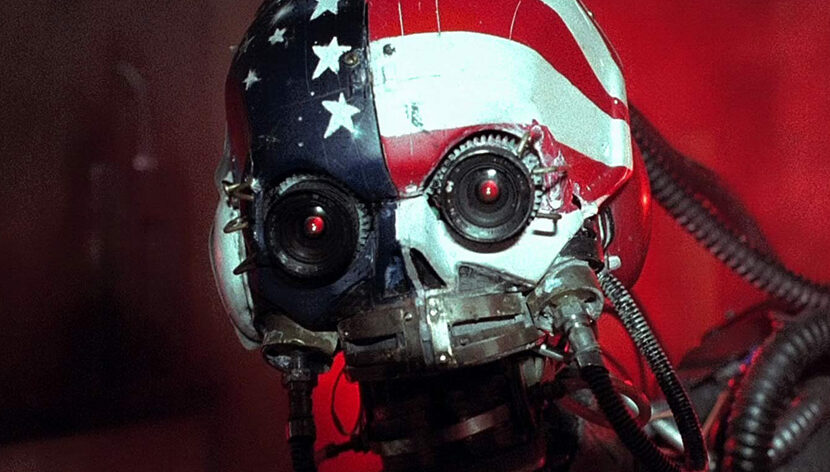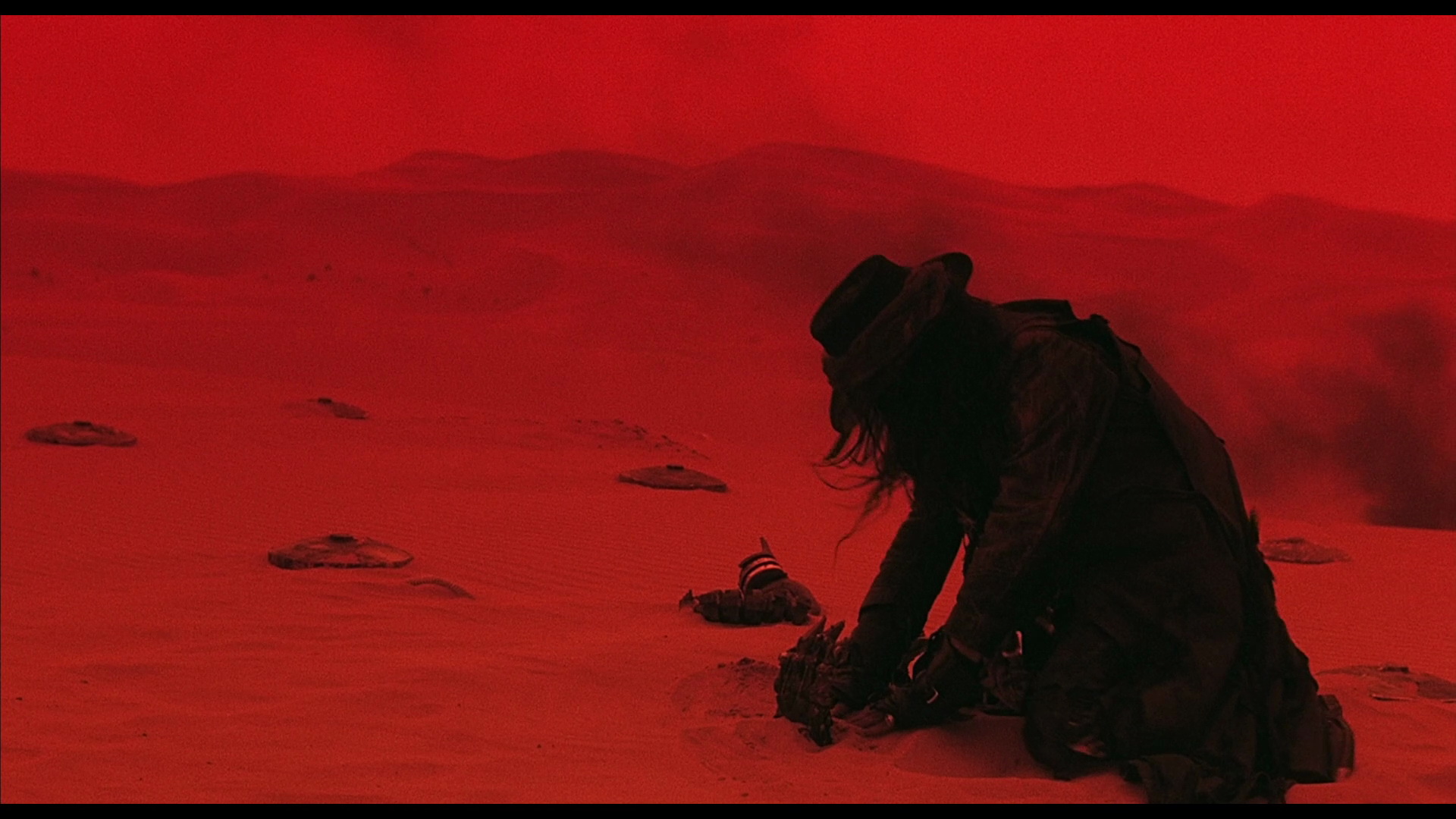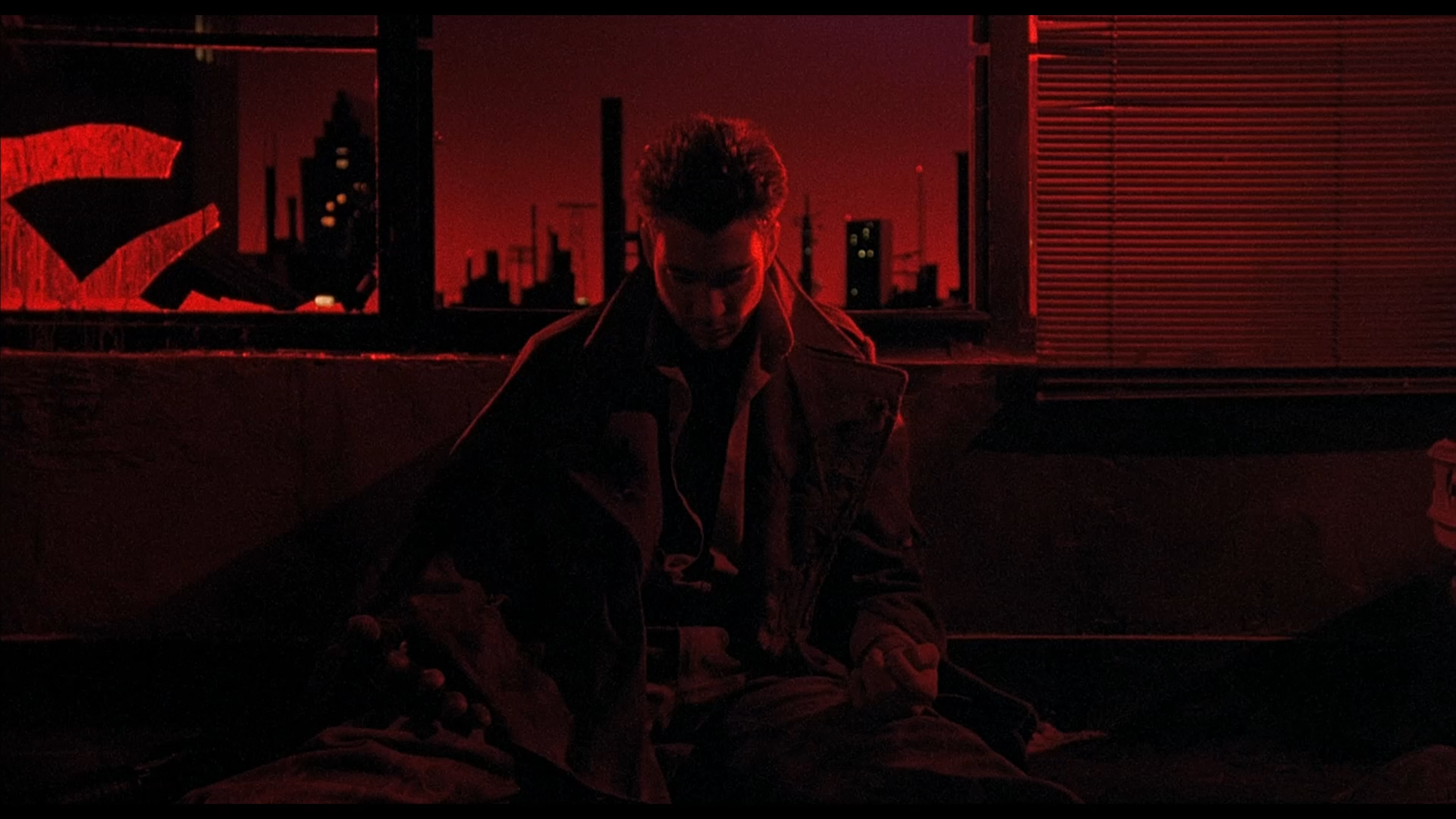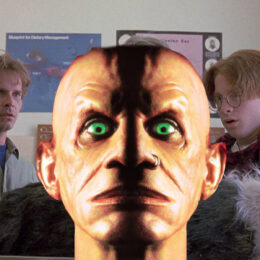HARDWARE. Post-apocalyptic vision intertwined with the tradition of cyberpunk

The consequence of the announcement of the creation of various types of robots meant to replace humans in daily work was the fear that machines would take control over humans. Therefore, in 1942, Isaac Asimov, a prominent creator of science fiction literature, formulated the so-called laws of robotics. They were created to regulate the future relationships between humans and intelligent machines. Skipping the exact wording of these laws, I’ll only mention the message that emerged from them because it was very concrete: a robot must obey humans and must not harm them in any way. However, creators of science fiction content unanimously decided that their task would be to depict pessimistic visions of the relationship between robots and humans to send a warning signal to humanity. Thus, the rebellion of machines against their creators became an extremely popular theme in the genre.
Many stories based on this theme were created as a result. For obvious reasons, they became attractive to the film industry, which began to exploit them diligently in the early years of cinema (e.g., Metropolis in 1927) and during its Golden Age (e.g., Gog in 1954). However, the real boom in films featuring evil robots occurred in the 1980s, thanks to the specialization in new special effects methods. This allowed the visual potential of these visions to be materialized on the screen even more successfully. The brightest examples of this trend were undoubtedly the films Terminator and RoboCop. However, I would like to talk about a film created in 1990 called Hardware, which may be somewhat less known but, due to its cult status, also has a loyal fan base.
Hardware is one manifestation of the imaginative combination of two subgenres of science fiction: a post-apocalyptic vision intertwined with the tradition of cyberpunk. The entire story is heavily tinged with horror, enriching this already broad palette of conceptual colors with a touch of terror. We find ourselves in America after a nuclear war, bathed in radioactive dust. The main character, Moses, traverses the wastelands, scavenging for scrap to make a living. He gives the better scraps to his girlfriend, Jill, who barricades herself in her home and engages in metal sculpting. One day, “Mo” brings her a real find – the remains of a government combat robot called Mark 13. However, they do not anticipate the calamity they have unleashed.

Droid Mark 13 is undoubtedly one of the most terrifying representations of the rebellious machine motif. Driven by an incomprehensible urge to kill, it embodies blind, destructive force, paradoxically brought to life by humans who knowingly violated Asimov’s laws. Its name is derived from the thirteenth chapter of the Gospel of St. Mark, in which Jesus paints a pessimistic picture of a nation rising against a nation in war and how no body will be spared in that war. The etymology of the name of this mysterious discovery is deciphered by the hero himself, who realizes the magnitude of the threat they are facing. Unfortunately, it is already too late because the awakened machine has begun its deadly rampage.
There is also an interesting symbolism associated with the way the robot is destroyed. WARNING: SPOILER After several unsuccessful attempts to destroy the droid, the final blow is delivered by a stream of water from a shower. How paradoxical, as it brings to mind the famous bacteria that the aliens in H.G. Wells’ War of the Worlds couldn’t handle. Once again, it turns out that what is the main source of existence for us can be the source of death for a mechanical entity at the highest level of technological development. Water, a universal symbol of life in our culture, becomes the cause of destruction when confronted with an object of such advanced technology. The significance of this scene is profound: as long as we can control the forces of nature or predict their effects, we don’t need to fear the takeover of the world by artificially generated organisms. END OF SPOILER
The film’s screenplay is based on a story titled “Shock,” which was published in the magazine “2000 AD.” This is a good time to introduce the profile of the creator of “Hardware,” who found this story and expanded it into a cinematic narrative. Richard Stanley is a relatively unknown director because he has only two full-length feature films to his name, one of which I am reviewing here. He began his career as a music video creator. After his second film, Dust Devil in 1992, he focused on making documentaries and film studies, which kept him out of the public eye. However, the two films he did create, although not critically acclaimed, were enough to win the hearts of science fiction fans through their visual style and unpretentiousness.

Interestingly, Hardware, a film that today serves as a hallmark of his work, was made when he was just 24 years old. After the film’s success (it managed to earn five times its million-dollar budget), he was offered the opportunity to direct Judge Dredd, which he declined in favor of working on his own project (the aforementioned Dust Devil). He was also considered for The Island of Dr. Moreau, but ultimately only co-wrote the screenplay for the film. Since he is now of an age where a return to the mainstream is possible, he occasionally hints at such a comeback. He even wrote a script for a sequel to Hardware called Hardware II: Ground Zero (the script is widely available online). However, the production of this sequel has not yet materialized, likely due to legal issues since the rights to the first film are still divided among several parties, including Miramax and producer Paul Trijbits. Nevertheless, I and other genre enthusiasts hope that Stanley will eventually return, if not with a sequel to his earlier hit, then with some other original, full-fledged story firmly rooted in the best traditions of science fiction.
I won’t argue that Hardware is a good film because it simply adheres to different criteria for evaluation. When critiquing a film, one must consider many aspects of its language through which it communicates with the audience. However, there is one aspect that transcends all objective judgments and is the result of the creator’s aesthetic intention: what we commonly call “atmosphere.” It turns out that a film can get bogged down in a narrative quagmire, fail to convince with its acting, or be marred by technical flaws. Still, if it possesses the right atmosphere, we can forgive all its inadvertent sins. Because atmosphere, my dear friends, is something transcendent, something that can detach itself from the structure of the film and elevate its value above the norm. It is something that affects not so much our conscious perception but rather a subconscious message whose meaning we often discover much later. After watching such a film, we know that we’ve encountered something flawed, but the power of its atmosphere inevitably brings a smile of satisfaction to our faces. There are many films characterized by this relationship, and Hardware is certainly one of the textbook examples.

This story undeniably has clear gaps, causing it to meander aimlessly at times. The seams between individual scenes don’t seem to be connected with the right thread. On top of that, there is extremely wooden acting (Dylan McDermott, who played Mo, later became a star in series like The Practice and American Horror Story, but Hardware marked the beginning of his acting career). However, these obvious shortcomings don’t play a significant role in the reception of the film. Because Hardware is one of those small works made with love for genre clichés, where creativity and enthusiasm override flaws and budget constraints. Bathed in a unique stylistic sauce reminiscent of Dario Argento’s style and complemented by an electro-punk soundtrack, it exudes an irresistible aura of uniqueness. Once you gaze upon the wastelands bathed in radioactive red or take part in this extraordinary parade of shapes, colors, and sounds, you’ll become entranced in this vision for good.


